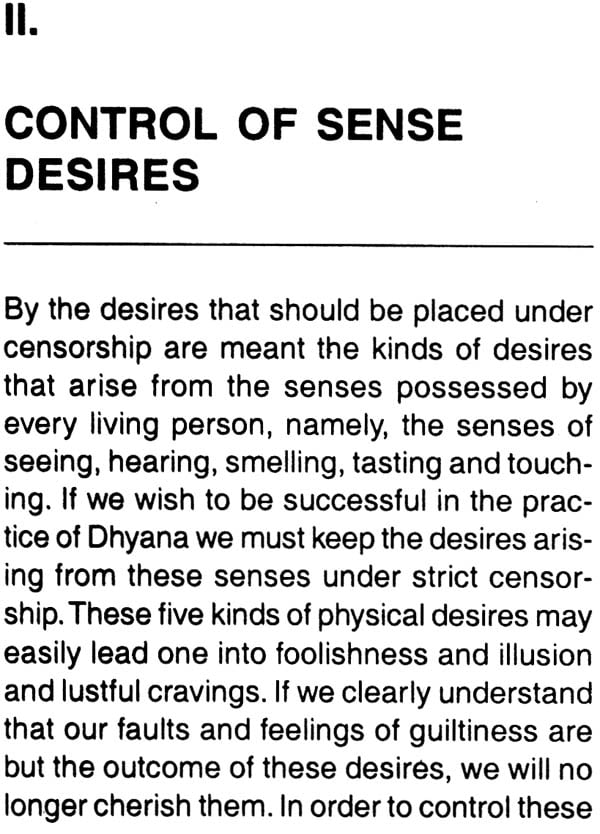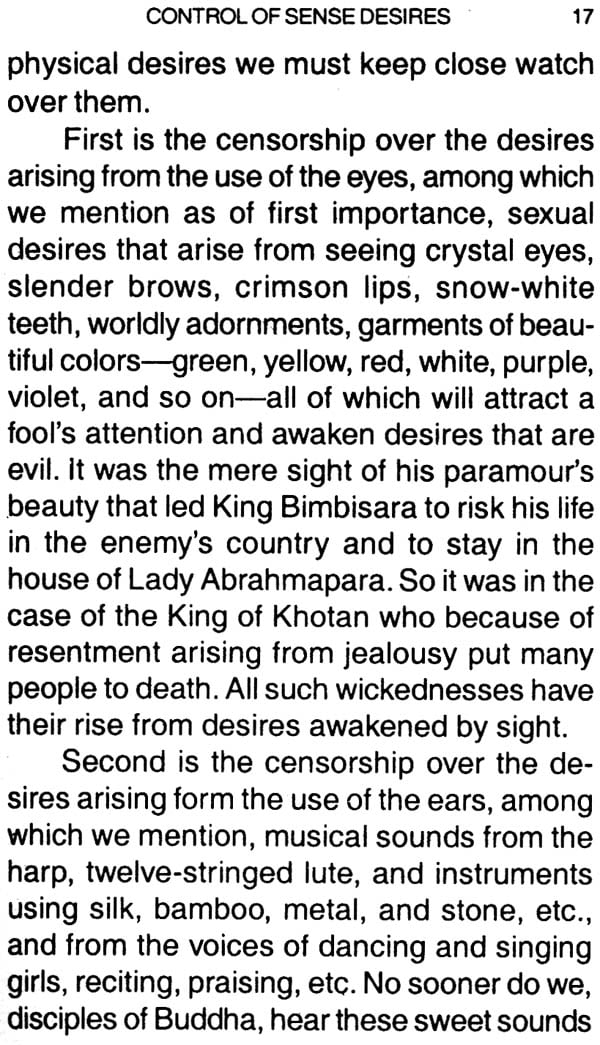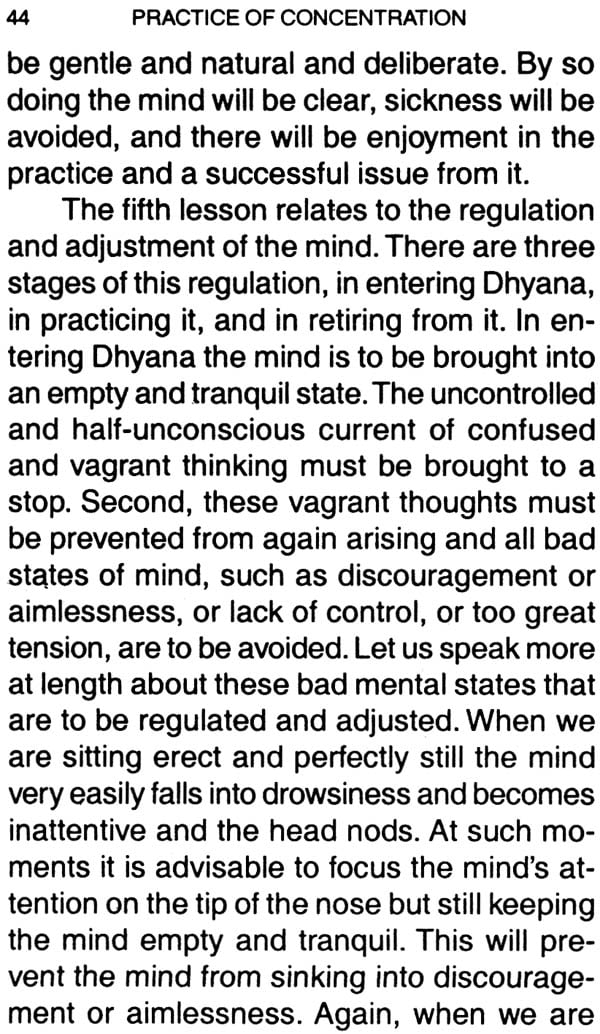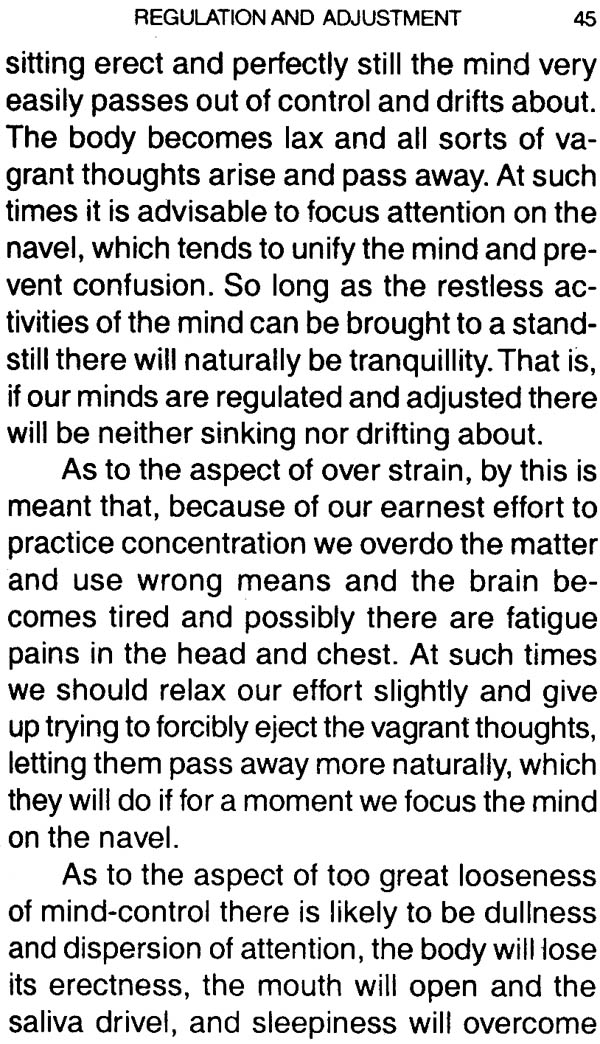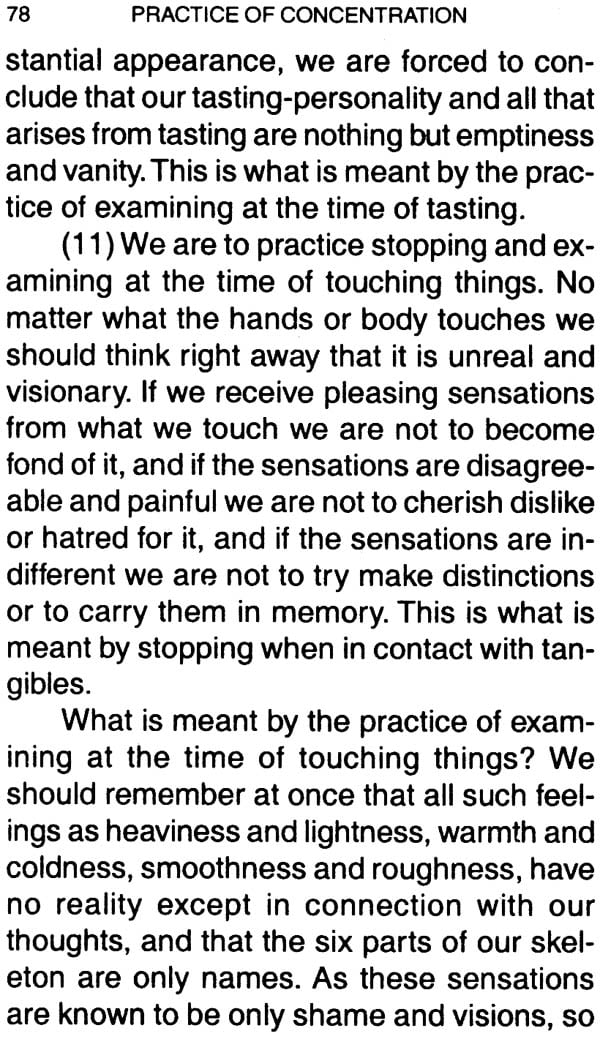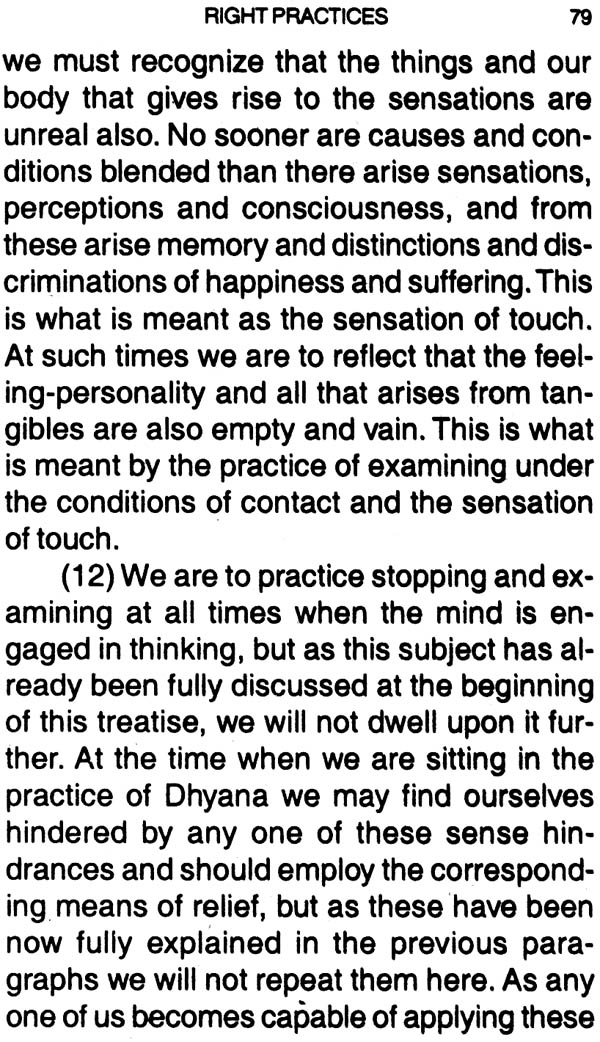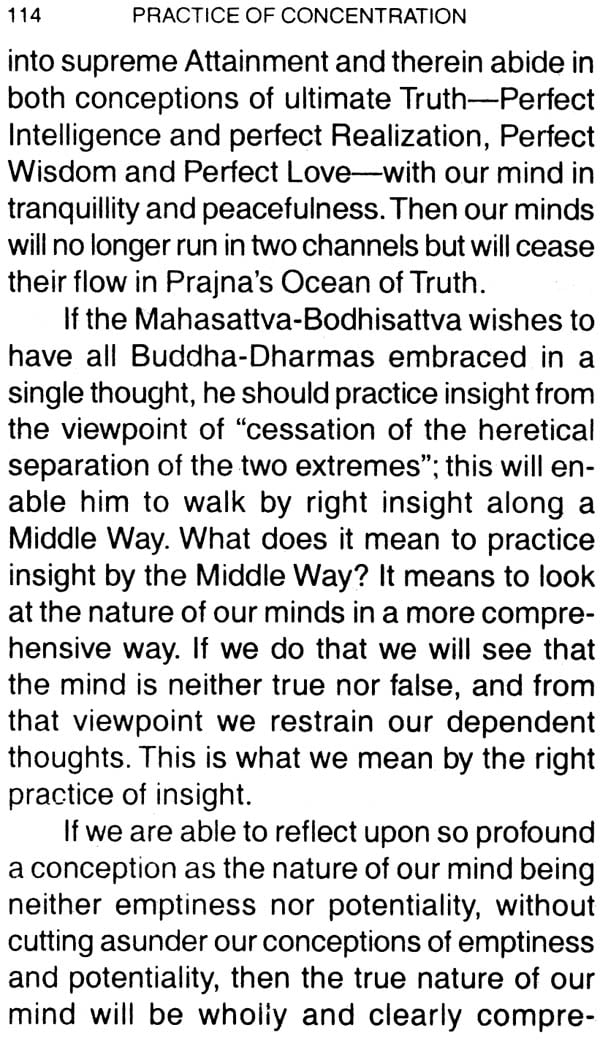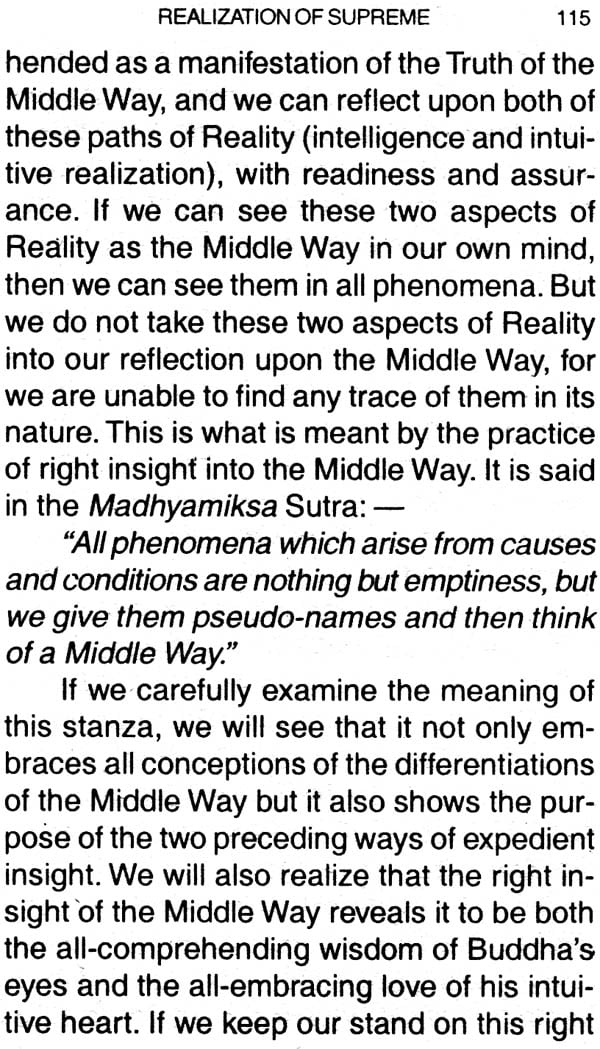
Buddhist Practice of Concentration
Book Specification
| Item Code: | IDJ036 |
| Author: | Bhikshu Wai-Dau, Dwight Goddard |
| Publisher: | Pilgrims Publishing, Varanasi |
| Language: | English |
| Edition: | 2004 |
| ISBN: | 9788177692679 |
| Pages: | 110 |
| Cover: | Paperback |
| Other Details | 6.0" X 4.0" |
| Weight | 110 gm |
Book Description
Preface
The Tien-tai Sect holds four treatises on dhyana in high regard. The first is entitled, dhyana for Immediate Enlightenment. It was written for those who are seeking instantaneous enlightenment by means of one phrase or even one word. It is the record of lectures given at the Nuo-chien monastery King-chow, Hupeh Province, by Grand Master Chih-chi. It was written down by Chang-an, one of his disciples, and was compiled in ten volumes. The second treatise is entitled. Dhyana by Regular Steps. It is also based upon lectures by the Grand Master, but this time they were delivered at the N'rkwei Monastery and recorded by the disciple Fah-chen. It was first compiled in thirty volumes, but was afterwards recompiled in ten volumes under the title, Dhyana Paramita, or the Ideal Dhyana. The Third treatise was at first entitled, Dhyana by Irregular Steps. It was written down by the Grand Master at the request of Mao-shee, a Minister of the Grand Council (Chen Dynasty 548-581). It was compiled in one volume and now goes under the little. Te Six Wonderful Ways Dhyana. The fourth treatise, the one we are now to study, was written down by the Grand Master for the benefit and instruction of his own brother (Lieutenant Colonel) Chen-chin. It is undoubtedly a compendium of the Master's mature understanding of the Mahayana and is a sure key to enlightenment.
The different headings employed in this book, such as, "Stop and Realize," "Sampatti and Prajna" (Transcendental-powders and Wisdom), "Tranquillization and Reflection," "Serenity and Quietness," are all derived from the same source. If you trace out this source and terminus, or should trace out the practices and attainments of Buddhas, they would all alike be found in this practice of Dhyana stopping thought about truth and realizing Truth itself. It was just what the Grand master of the Tien-tai Mountains had himself experienced in a vision of the Vulture Peak that had come to him when he was staying at the great Su great Su Mountains, and was always after his chief inspiration. Briefly speaking on the Dhyana, which our Master Chih-chi had practiced, and the Samadhi, which he experienced, and the lectures, which he had delivered with such eloquence, were nothing but the manifestation of this "Stop and Realize" or in other words, what the Master had been teaching us was simply the narrative of the operation of our own minds; and the profound teaching of the Tien-tai School, and the voluminous literature to be studied, are no more than an elaboration of this single subject. If we should disregard the conception of Dhyana, it would be impossible for us either to understand or discuss the teachings of the Tien-tai School. Consequently, it is not only necessary for everyone who is following (Buddha) to study it; it is also necessary for him to practice it.
As we look outward upon the world, we see corruption everywhere-people hankering after amusements, seeking to gratify their own selfish comfort, trying to rationalize their prejudices, deliberately blinding their eyes to their own enlightenment. How few there are who comprehend the way to practice Dhyana! Instead of studying this book they keep it hidden away in a bookcase and their labor is invain. But again I bring the teaching to the "engraver of wooden blocks' for another republishing and I hope that everyone who reads it will practice its teachings and gain thereby a personal realization of its immeasurable treasure. As my labor is now ended, I write these few lines as an introduction.
Back of Book:
This book is indispensable for anyone desiring a deeper perspective of the fundamental issues in Buddhist philosophy.
From its very beginning, Buddhist philosophy has been involved with defining and overcoming the limitations and errors of ordinary awareness. To do this was essential to Buddhism's central purpose of establishing a path and method of attaining liberation Conceptual thought, in this view, is capable of leading to liberating understanding, a transformative spiritual experience.
This invaluable volume, with its precise elucidation of core issues of Mahayana Buddhism, stands as a key work in Buddhist literature. It provides a well-rounded assessment and clarification of the nature and process of meditation and concentration. It is designed to provide the reader with a solid foundation in this vital art and science.
"Then you must also know what meditation is, what it is to have a very still, a very quiet mind. And it is only such it mind that can know the real religious mind."
J. Krishnamurti
"Meditation is the royal highway to man's understanding of himself."
Dr. Evans-Wentz in his Foreword to 'Buddhist Meditation'
"The function of meditation leading to that is to dissociate you from your commitment to this body, which is afraid to die, so that you realize the eternal dimension is right here, now, everywhere."
Joseph Campbell renowned thinker and scholar
| | ||
| | ||
| Chapter I | External conditions | 6 |
| Chapter II | Control of sense desires | 16 |
| Chapter III | Abolishment of inner hindrances | 23 |
| Chapter IV | Regulation and adjustment | 36 |
| Chapter V | Expedient activities of mind | 50 |
| Chapter VI | Right practices | 54 |
| Chapter VII | Development of good qualities | 82 |
| Chapter VIII | Evil Influences | 96 |
| Chapter IX | Treatment of Sickness | 106 |
| Chapter X | Realization of Supreme Attainment | 110 |
